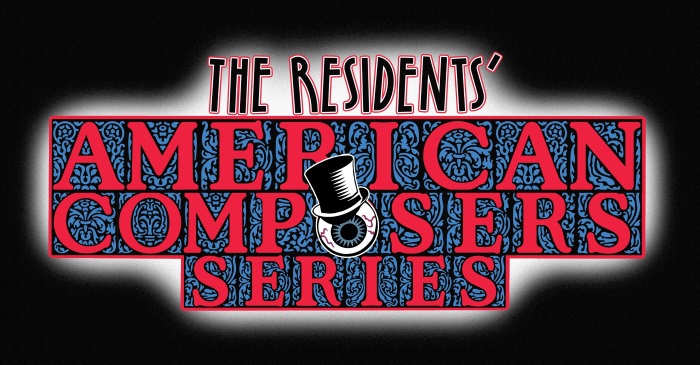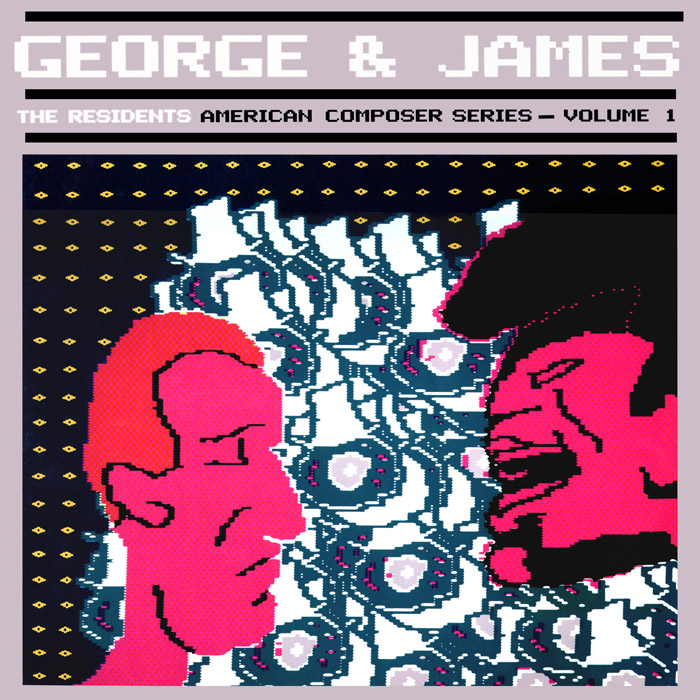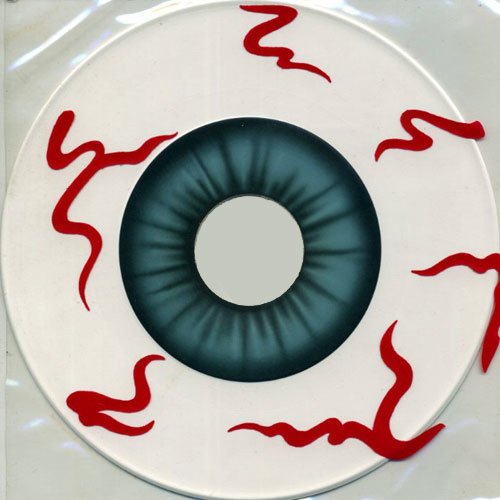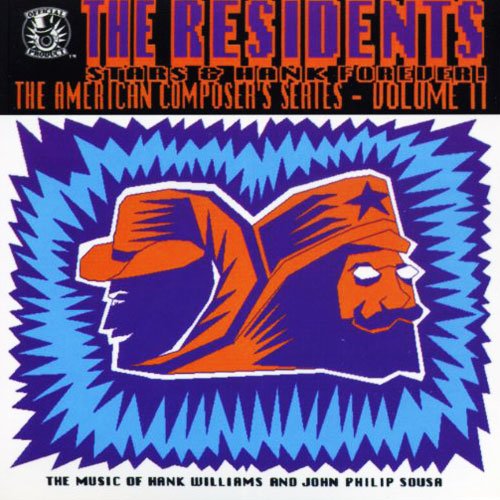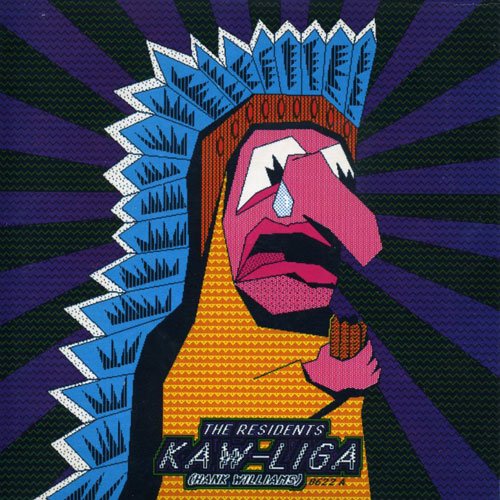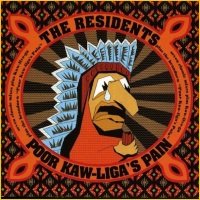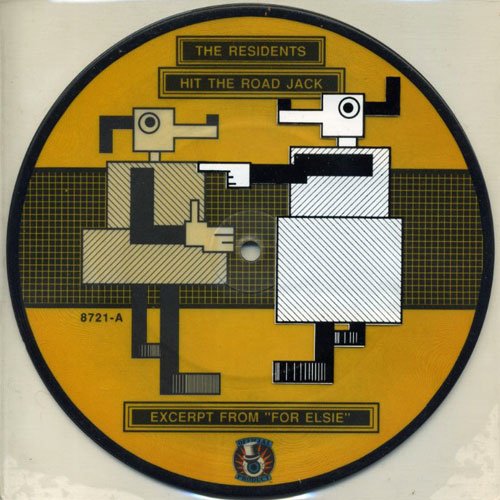American Composers SeriesOverviewUncle Willie
Feeling burned out on underground epics after the disastrous Mole Show tour, The Residents decided to postpone work on Part Three of the Mole Trilogy. But they needed a project, and Ralph Records said they had to make some money, an all but foreign concept for a band both lauded and dismissed for its doggedly uncommercial approach to the music business. Typically, after a brief period of reflection, the group decided to go in two directions, both familiar, but in different ways. In retrospect, it was no surprise that The Residents moved back toward the comfort and success they had achieved reinterpreting the music of other composers but, unexpectedly, the new project was in some ways even more extravagant than the overly ambitious Mole Trilogy. Taking the Residential concept of "music about music" to its logical extreme, the band threw itself into a serious, long-term project grandiosely titled The American Composers Series.
Essentially, the concept was a musical exploration of various American composers, two at a time, juxtaposing one against the other, with each featured on opposite sides of an LP. The band would first deconstruct the music then rebuild it around the Residential values of naivete, atonal innocence and playful pretense. By breaking break down the mythology surrounding the celebrated composers and reducing the music to its essence, The Residents purposefully created the lofty goal of imposing their own Theory of Obscurity on other famous musicians. Satisfied with their new direction, the group then announced a goal of interpreting twenty different composers on ten albums over a period of sixteen years, from 1984 to 2001.
The first album, George & James, interpreted the music of George Gershwin and James Brown. The band followed this with John Philip Sousa and Hank Williams on Stars & Hank Forever. Audaciously appropriating the intro of Michael Jackson's Billie Jean, the band released a single based on Williams's 'Kaw-Liga," which shockingly sold in the six figures, making The American Composers Series a huge financial success for The Residents.
The third album in the series was tentatively titled The Trouble with Harrys, featuring the music of Harry Partch and Harry Nilsson, but The Residents unexpectedly abandoned the project in 1986. As LPs lost sales to CDs, the music business was changing; in addition, despite the success of Kaw-Liga, music publishing rights - the fees paid to composers - were getting more expensive. Meanwhile it took longer to record CDs, which held 50-75% more music than LPs, and finally, part of the charm of series was its juxtaposition of one composer against another, a non-existent feature on one sided CDs. In addition the sales of Ralph's other groups were poor. Consequently, the answer to this losing equation was touring so The Residents reluctantly ended the American Composers series and turned their efforts to Cube-E, arguably, their most successful tour.
Quite a few ideas were bounced around during the planning of the abandoned series. The band wanted to include Captain Beefheart, Sun Ra, Smokey Robinson, Bob Dylan, Charles Ives, Stevie Wonder, Moondog, Barry White, Scott Joplin and Brian Wilson in the series, and actually started work on several compositions by Bob Dylan and Barry White for a volume tentatively titled Bob & the Blob. Some of these preliminary attempts were later compiled and released on UWEB's Daydream B-Liver collection.
While critics complained that the series was nothing new for the band, referring to it as "modest," "lacking ambition" and "predictable," the Cryptic Corporation has insisted the series, by design, was never intended to break new ground. Furthermore, they claimed the concept should primarily be viewed as an educational experience for the band; in addition, by binding the work with the Theory of Obscurity, the only needs to be gratified in the project were those of the artist. Regardless, with only two of the ten projected albums completed, the question of the artists' satisfaction relative to The American Composers Series remains unanswered.
It's not been so long ago that I was forced to recall the derivation of a particular Residents' tune, theory, or personification, but it has been a long time since I thought about the origination of the American Composers Series. The Residents' version of ANYBODY ELSE'S music had always made sense to me (Can you recall a time when you didn't want The Residents to do Elvis?). After The Third Reich 'N' Roll, I was always ready to hear The Residents mess with other people's music. A Resident tells me now that coming off the Mole Show tour, the rigors of winding down, and the need to ignore the pressure of producing something entirely from scratch, made them think about what already existed that would be good to attack with Residency. I heard early-on the names of the possible composers to be "done," and was delighted at the first combination: George Gershwin and James Brown. But I was scared about the outcome of GG, what with the stuff being closer to straight music than what The Residents had tackled so far. (You answer: What's the difference between the straightness of "Rhapsody in Blue" and the straightness of "Judy in Disguise?") Contrary to most other projects, I heard the full Residents' Gershwin only after most of the finishing musical touches, and said, "Well, you certainly did it, didn't you?" and meant that the majestic GG was there--plus, it was a young, sexy and non-righteous kind of majestic. For me, appreciating James came more slowly: the evolution of JB/Rez vocals, and getting over JB as a god took time. You answer: Did you go searching for your old 'Live at the Apollo' album after hearing The Residents do JB to refresh yourself re the original growling and timing? The next two, Hank Williams and John Phillip Sousa, were treated less like honored house guests and more like old, beloved flannel shirts that you wear til they're raw, but whose plaids you can't change. So, Stars & Hank Forever is more comfortable in presenting these two as recognizable favorites, rather than brainwashing you into a new opinion.
Yes, you take some of this stuff as cartoonie. Some goes the range from close, hands-on, heart wringing to distance-in-drag; from an exploitation of new recording equipment to dogged determinism to make a release date; from "Great Risks that Work" to belabored, old discordant discord; from sagginess to the very edge of thralldom; from Perfection to the Melmac of Music. (You answer: Do you keep your keyboard by your bed? What do you jot your dreams down on?) The Residents aren't just words slathered on the tongue without benefit of pronunciation: you can tell the difference between the words lying on the salt buds, and the ones lying on the sweet and sour buds, and somewhere along the way, you begin to rely on the peculiar taste. So you want the next American Composer Series Combo to be Allen Toussaint with Moondog, Willie Dixon with Leonard Bernstein, or Charles Mingus with Brian Wilson? (You answer.) I'm asking for Rachmaninov with Perez Prado, no matter what their nationalities.
-Nessie Lessons

